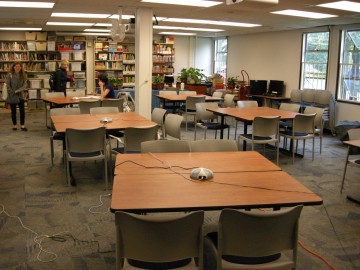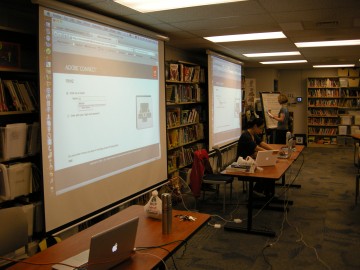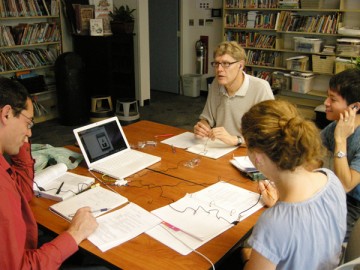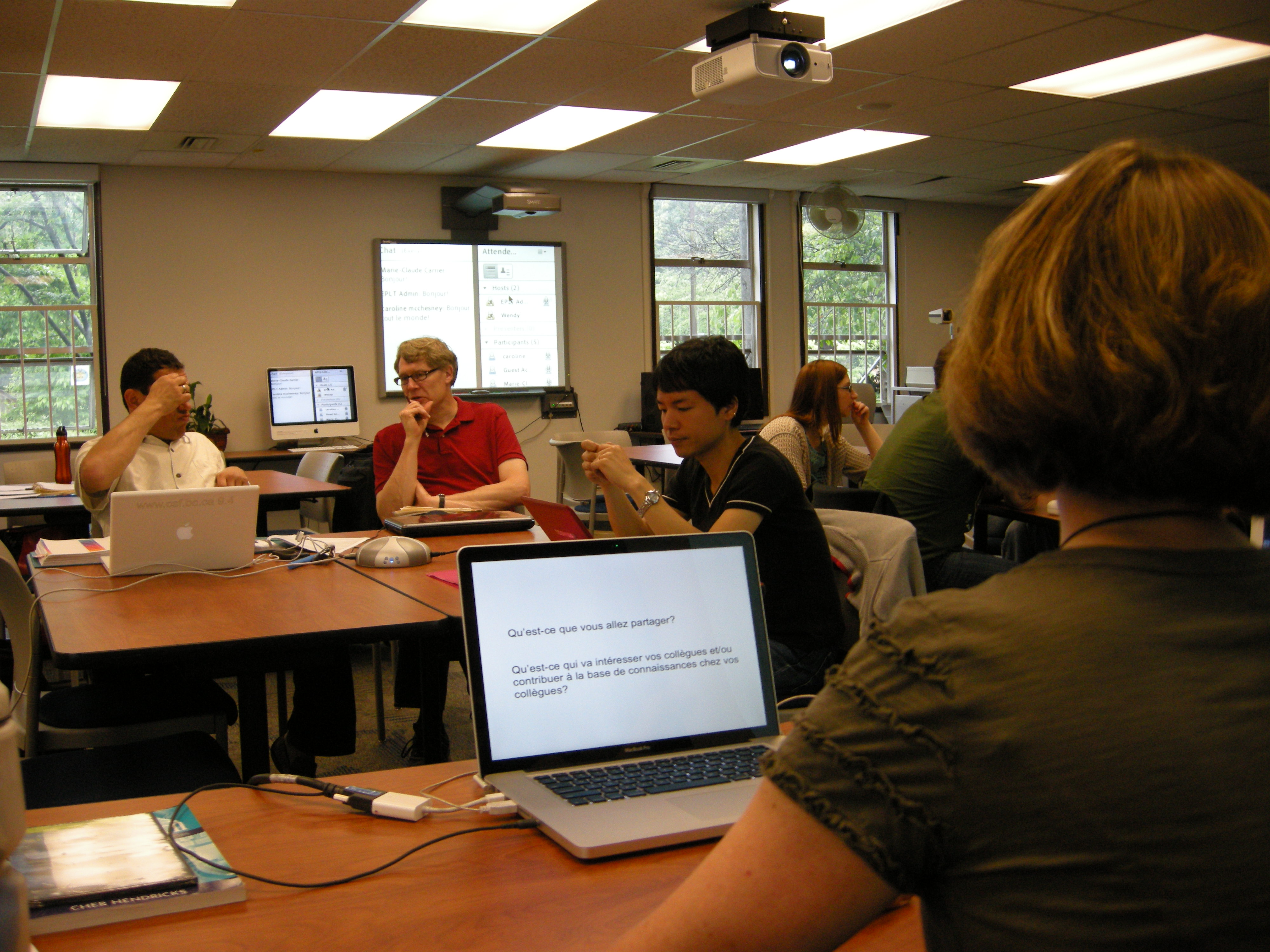Overview
The 2007 report “Lessons in learning: French-Immersion education in Canada” by the Canadian Council on Learning indicates less than 10% of Anglophones are bilingual, despite a strong support for bilingualism and belief in the importance to learn a second language. According to the report, half of Canadians blame a lack of opportunities to learn for this low level of bilingualism and “there is a shortage of qualified French immersion teachers in most provinces… Long-term solutions to this issue will require expanded opportunities for post-secondary learning in French, as well as opportunities and incentives for teachers to develop their French-language skills during their teacher preparation”. (p. 8)
As a response to address this shortage of qualified French-immersion teachers, a 30-credit Master’s degree cohort program on Teaching French as a Second Language was developed in 2010. In this program, eight courses were held at the UBC campus in the fall and winter sessions, and two courses were taught in Montreal, Quebec during the summer sessions. Each UBC course included 6 hours of synchronous instruction on Saturdays, when students in the Greater Vancouver area would attend in-person and students who were further would attend via online. Additional course content was available in LMS for the entire duration of the course.
Goals
The goal of the instructional support team was to create a blended learning environment that enabled students in distributed locations to participate in this program. The learning environment needed to be immersive, responsive, and enabling the instructors and students to interact with each other with minimal efforts regardless of their geographical location.
Deliverables
- A set of best practices for hybrid instruction
- EDUC 500 Research Methodology in Education
- LLED 523 Action Research Education
- LLED 590 Graduating Paper
Educator’s Cafe
Two instructors from the program, Dr. Bournot-Trites and Dr. Wernicke, presented at the Educators’ Café to share their instructional practices of using Connect, Collaborate, and the Collaborative Learning Annotation System in this hybrid M.Ed program. The instructors discussed their learning experiences with the various educational technologies and how new tools were introduced to the students and incorporated into the curriculum throughout the program. The instructors also discussed the unique challenges and opportunities that come with teaching in a blended environment.
Publication
Boskic, N., & Hu, S. (2012). Blended learning: The road to inclusive and global education. In E.J. Francois (Ed.), Transcultural Blended Learning and Teaching in Postsecondary Education. (283-301). Oshkosh, Wisconsin: IGI-Global.
Presentations
Boskic, N., & Hu, S. (2012). Evolution of the blended learning environment at the University of British Columbia. Presented at COHERE 2012 Conference. Blended Learning: A Strategy for Transforming Teaching and Learning.
Boskic, N., Hu, S., & Rattray, A. (November, 2010). To Engage or Not to Engage: Web vs. Video Conference. Presented at Educational Technology Users Group, Fall Workshop 2010.
Boskic, N., Hu, S., & Rattray, A. (September, 2011). What Happens when Education and Technology Meet in Real Time? Presented at Celebrate Learning Week, UBC.
Lessons Learned
Two factors contributed to the successful initial program offering:
- Provide equipment and software orientation every instructor and student. At the orientation, instructors and students configured the audio & video settings of their laptops, tested their microphone and webcam, and became familiar with the platform’s user interface and functions. Offering the orientation prior to the start of the program helped to preserve the instructional hours for course work rather than equipment setup and also lowered the anxiety level from thinking “something may go wrong”.
- Utilize cross-institution software license agreements (e.g., Shared Services from BC Campus) to minimize cost and take advantage of a wider user-supported knowledge base. Similarly, explore existing common resources such as equipment and classroom space.
After the first program offering, the instructors and instructional designers developed a new workflow to address a few shortcomings. This workflow was implemented in all subsequent hybrid programs and courses.
- Invite both students and instructors to establish a classroom norm so everyone understands the expected behaviours in class. For instance, when an online students has a question, is the preferred method of communication to activate the microphone, wave at the camera, or type in the chat window. The agreed upon protocols may minimize complications caused by the difference between online and in-person participation. For instance, perceiving a student as being rude when he talked over another student, when in reality it was due to connection lag. Or, identifying a student as non-participatory because her webcam was turned off, when in fact it was turned off to save bandwidth.
- Pay attention to the ratio of in-person and online participants in each discussion group. If the majority of the participants are in-person, it was easy for the in-person students to unintentionally overlook the online participant and only engage with the other in-person students. This discrepency was pronounced when there were technical difficulities. Instead, have at least equal number of online students as in-person students in a group, so the group will more naturally engage the online students.
- Mandate minimum technical requirements because the quality of a hybrid session is affected by the “lowest common denominator” in terms of hardware, software, and internet connection speed of everyone in the group. This would minimize instructional hours spent on trouble shooting technical problems.
- Conduct regular environmental scans of the available hardware and software to see how instruction in the hybrid environment can be improved.
Comments
“Je dois toutefois dire que le format synchro me permet de suivre ce cours à distance tout en profitant de quelques caractéristiques d’une classe – le contact visuel avec le prof, la possibilité de poser des questions et d’obtenir des réponses immédiatement de bénéficier des questions ou commentaires de mes collègues de classe, de travailler en groupe et de pouvoir discuter entre nous.”
“I must say that the synchronous format allows me to follow the distance courses while enjoying some characteristics of a class – eye contact with the teacher, the opportunity to ask questions, and immediate response from my classmates while working in groups.”
– Étudiante de Fredericton, Nouveau Brunswick
“Le format d’apprentissage en ligne me convient parce qu’il ne faut pas que j’aille à UBC et les cours ne sont qu’un jour par semaine. L’enseignement à date est excellent et j’ai hâte de commencer le prochain cours”
“The online learning format suits me because it means I do not have to go to UBC and the live courses are only one day a week. The instruction to date is excellent and I’m looking forward to the next course ”
– Étudiant de Vancouver, Colombie-Britannique
“…L’enseignement en ligne est une immense chance pour les personnes comme moi qui résident dans une communauté isolée telle que Powell River.”
“Online education is a huge chance for people like me, who live in an isolated community like Powell River.”
– Étudiante de Powell River, Colombie-Britannique
Project Team
Project Management
Natasha Boskic, Senior Manager, Learning Design, ETS
Course Authorship & Instruction
Monique Bournot-Trites, Associate Professor, Department of Language and Literacy Education (LLED)
Meike Wernicke, Sessional Instructor, Department of Language and Literacy Education (LLED)
Isabelle Denizot, Sessional Instructor, Department of Language and Literacy Education (LLED)
Wendy Carr, Associate Professor, Department of Language and Literacy Education (LLED)
Instructional Design & Media Development
Sharon Hu, Instructional Designer, ETS
User Support Provision
Yifei Wang, Graduate Teaching Assistant, Department of Curriculum and Pedagogy (EDCP)
Ian Linkletter, Learning Technology Specialist, ETS



